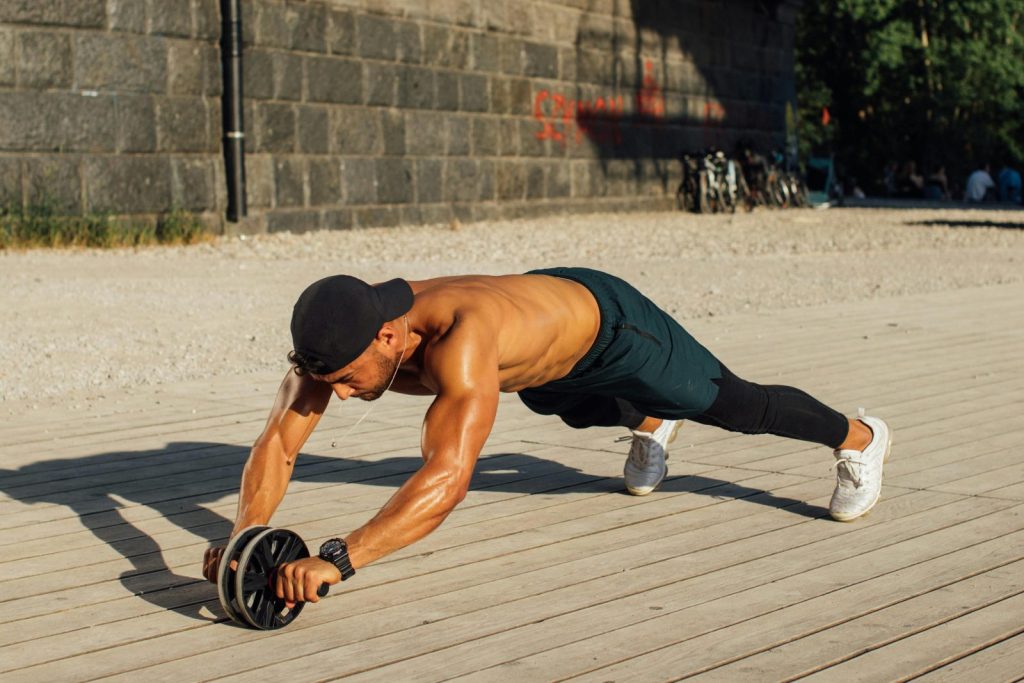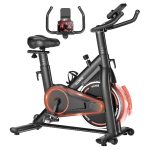calisthenics: 5 Game‑Changing Myths Debunked for Powerful Strength, Size, and Pain‑Free Progress

calisthenics: 5 Game‑Changing Myths Debunked for Powerful Strength, Size, and Pain‑Free Progress.
Calisthenics can build serious muscle, strength, and athleticism when programmed with progressive overload, smart exercise selection, and measurable benchmarks, despite common myths that it is “only cardio” or “can’t grow legs.”
Why these myths persist
Confusion usually comes from two places: not realizing how heavy well‑chosen calisthenics actually are, and not using structured progressions that create mechanical tension and sufficient weekly training volume for hypertrophy and strength.
With objective tools like load estimates for push‑ups, EMG comparisons to bench press, and proven lower‑body bodyweight drills like Nordic hamstring work, calisthenics becomes as programmable as any barbell plan.

What this guide gives
- Clear, research‑anchored debunks of five persistent myths that keep calisthenics stuck at “toning” instead of muscle and strength.
- Practical progressions, weekly structure, and cues that convert calisthenics into progressive overload with quantifiable milestones.
- High‑intent keywords woven naturally for discoverability: bodyweight workout, push‑up progression, pull‑ups, pistol squats, Nordic hamstring, hypertrophy training, progressive overload, home workout plan, injury prevention, and joint‑friendly strength.
Myth 1: “Calisthenics can’t build real muscle”
When training variables meet hypertrophy requirements—mechanical tension, sufficient volume, and progressive overload—muscle growth happens regardless of whether the resistance is iron or bodyweight.
The American College of Sports Medicine emphasizes that multi‑set programs with adequate intensity and volume are recommended for maximizing hypertrophy, and those conditions can be achieved with calisthenics via leverage, unilateral loading, and weighted variations.
A standard push‑up already loads roughly two‑thirds to three‑quarters of bodyweight depending on position, which places it solidly within hypertrophy‑capable intensities for many lifters.
Experimental work shows push‑ups can predict bench press 1‑RM and allow graded loading with weight vests, reinforcing that calisthenics can be progressed with objective steps similar to free weights.
Kinematic and EMG comparisons demonstrate strong similarity between properly loaded push‑ups and bench presses, indicating calisthenics can produce comparable upper‑body muscle activation when intensity is equated.
How to fix it
- Anchor sessions with mechanically demanding patterns (push‑ups, dips, pull‑ups, rows, squats, hip hinges) and increase difficulty via leverage, tempo, range, unilateral work, or external load.
- Aim for multiple weekly sets in the classic growth zones, progressing either reps, density, or load to keep tension rising over time.
Myth 2: “Calisthenics can’t train legs and hamstrings”
Bodyweight leg training can be brutally effective when the movement choice challenges the target through long ranges and high tension, as shown by the Nordic hamstring exercise which halves hamstring injury risk across sports while boosting eccentric strength.
Systematic reviews and meta‑analyses report that programs including the Nordic hamstring exercise reduce hamstring injuries by about 51%, implying significant eccentric strength development with a bodyweight‑dominant drill.
Beyond hamstrings, single‑leg squats, step‑ups, split‑squats, and plyometrics let calisthenics load quads and glutes through deep ranges and powerful contractions that scale to advanced athletes.
Because intensity can rise through leverage and unilateral mechanics without equipment, lifters can stay in progressive overload across full lower‑body movement patterns.
How to fix it
- Combine unilateral knee‑dominant work (pistols, assisted pistols, deficit split squats) with hip‑dominant drills (Nordic curls, hip hinges, back extensions) to cover the force curve.
- Progress by manipulating depth, tempo, and assistance before adding external loads like a vest or dumbbell, maintaining joint‑friendly control.
Myth 3: “Calisthenics is just cardio, not strength”
Calisthenics can be cardio if structured as circuits, but the same movements become strength‑focused when sets emphasize controlled eccentrics, hard end‑range contractions, and challenging variations at lower rep targets.
ACSM highlights resistance exercise as a driver of health and performance, with recommendations that map cleanly onto calisthenics when intensity and volume are planned, not improvised.
Push‑up loading sits far above “light activity,” and EMG work shows high activation when calisthenics are loaded or progressed, clearly differentiating proper programming from casual movement.
This is why calisthenics can build muscle and maximal strength alongside conditioning, provided rep schemes, rest, and difficulty are chosen for the intended outcome.
How to fix it
- Separate strength sessions (harder variations, 5–10 rep sets, longer rests) from conditioning sessions (circuits, shorter rests), and track progression objectively.
- Use standardized variations and logbooks just as with barbell plans to ensure overload rather than random fatigue.
Myth 4: “You can’t do progressive overload with calisthenics”
Progression is built into calisthenics through leverage (elevations, deficits, foot/hand position), unilateral moves, tempo manipulation, partials into full range, and eventually external load like a weight vest or backpack.
Research on push‑ups confirms they can be loaded systematically (e.g., feet elevation, vests) with measurable changes in relative load, making them trackable like any press.
ACSM‑aligned progression logic—add small increments when target reps are achieved across sets—applies equally to bodyweight training when difficulty is scaled in controlled steps.
EMG and kinematic similarities between loaded push‑ups and bench press reinforce that calisthenics can occupy the same training “slots” when intensity matches the goal.
How to fix it
- Pick a main movement, define your next progression step (e.g., elevate feet 10 cm, slow eccentric to 3 seconds, add 2 kg vest), and move up only after hitting clean rep targets in all sets.
- For lower body, progress Nordic leverage, single‑leg depth, or pauses before external load, maintaining joint positions and range that build confidence and capacity.

Myth 5: “Calisthenics is bad for joints or unsafe”
Resistance exercise is broadly safe and beneficial for adults when progressed gradually with good form, with ACSM underscoring its role in improving many facets of health.
The Nordic hamstring exercise literature shows that well‑selected bodyweight drills can lower injury risk while improving eccentric strength and performance, highlighting safety when programs are planned and taught well.
Joint issues usually stem from rushed progressions, poor technique, or excessive volume spikes, not from the calisthenics modality itself, which can be one of the most joint‑friendly ways to train.
A patient ramp‑up using objective milestones and pain‑free ranges turns calisthenics into a long‑term strength practice instead of a short‑term challenge.
How to fix it
- Standardize technique, keep 1–2 clean reps in reserve early on, and progress one variable at a time so tissues adapt steadily.
- Use regressions without hesitation; the right level done well is safer and more productive than the wrong level done poorly.
How to structure a powerful calisthenics week
Weekly goals and cues
Most lifters grow on multiple hard sets per muscle per week with progressive stimulus, using classic hypertrophy levers like mechanical tension, set volume, and controlled eccentrics.
Plan two to four full‑body sessions or an upper/lower split, and progress either reps, density, or difficulty weekly while protecting form.
Sample full‑body A
- Push pattern: Feet‑elevated push‑ups 4 x 6–10 with 2–3 second lowers for high tension.
- Pull pattern: Pull‑ups or assisted pull‑ups 4 x 5–8 with a hard squeeze at top.
- Legs hinge: Nordic hamstring regressions 3 x 4–8 controlled eccentrics.
- Legs squat: Assisted pistols or split squats 4 x 8–12 per side.
- Core brace: Hollow holds or body saws 3 x 20–40 seconds.
Sample full‑body B
- Push pattern: Dips or bench‑supported deep push‑ups 4 x 6–10.
- Pull pattern: Inverted rows 4 x 8–12 with feet elevation as progression.
- Legs hinge: Hip hinge/back extensions 3 x 10–15 with glute squeeze.
- Legs squat: Step‑ups or cossack squats 4 x 8–12 per side.
- Core anti‑rotation: Side plank variations 3 x 20–40 seconds per side.
Progression rules
- When all sets meet the rep target cleanly, increase difficulty one notch (lever, tempo, range, or small external load) the next session.
- Keep a steady log; if a jump is too large, use an intermediate regression to maintain consistent overload without form loss.
Technique cues that change everything
- Tension first: Set shoulder blades and brace before every rep to channel force into the target, not the joints.
- Control the negative: Two to three seconds down boosts mechanical tension, a pillar of hypertrophy and robust strength.
- End‑range ownership: Pauses at the bottom or top cement positions and prevent momentum from masking weak links.
- Leverage wisely: Small changes in elevation or limb position can add meaningful load; change one variable at a time.
Plateau breakers that still protect joints
- Density blocks: Keep total reps constant but shorten total time, then deload and rebuild.
- Eccentric bias: Add an extra second on the lowering phase for a block, then return to normal tempo stronger.
- Micro‑loading: A 1–2 kg vest or backpack can bridge gaps between leverage steps without sacrificing form.
Troubleshooting quick hits
- Elbows ache on dips or push‑ups: Widen hand spacing slightly, reduce depth, slow the eccentric, and regress a step until tissues adapt.
- Hamstrings cramp on Nordics: Reduce lever by raising the torso angle and shorten the eccentric; build weekly before extending range again.
- Pull‑ups stall: Add isometric holds at top, slow eccentrics, and more frequent submaximal exposures across the week.

Putting it together today
- Choose one push, one pull, one squat, and one hinge that are hard but pain‑free for 3–4 sets each, and log exact reps and variation.
- Repeat twice weekly, improve one variable per movement, and let patience compound into strength, muscle, and confidence without joint drama.
- When ready, add a small external load or leverage change and keep the same quality standards so progress is obvious on paper and visible in the mirror.
By replacing myths with measurable progressions—supported by ACSM guidelines, EMG/kinematic comparisons, objective push‑up loading, and proven lower‑body calisthenics like the Nordic hamstring calisthenics becomes a precise, joint‑friendly system for building strength and size at home or in the gym.

